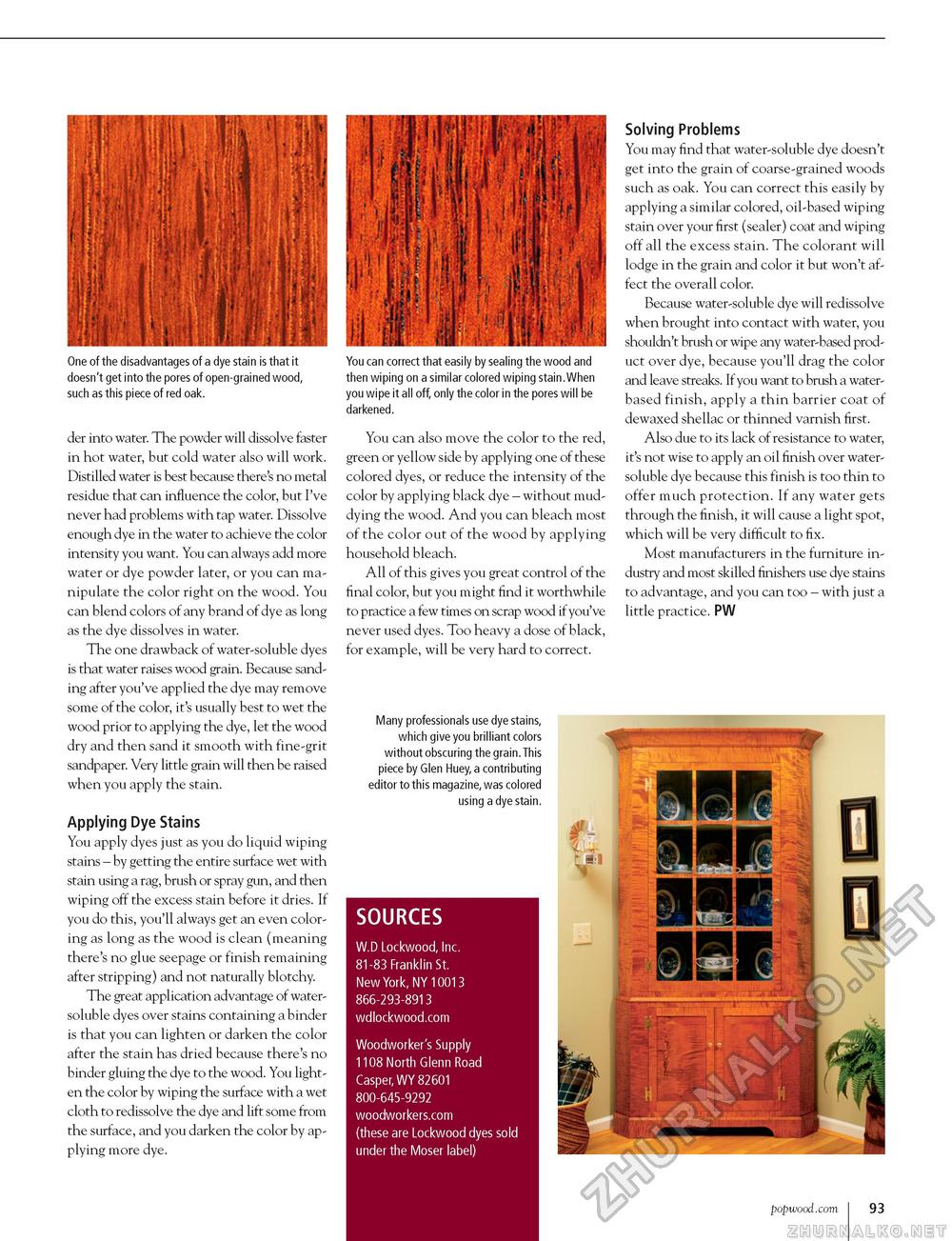Popular Woodworking 2003-04 № 133, страница 93
Solving Problems You may find that water-soluble dye doesn't get into the grain of coarse-grained woods such as oak. You can correct this easily by applying a similar colored, oil-based wiping stain over your first (sealer) coat and wiping off all the excess stain. The colorant will lodge in the grain and color it but won't affect the overall color. Because water-soluble dye will redissolve when brought into contact with water, you shouldn't brush or wipe any water-based product over dye, because you'll drag the color and leave streaks. If you want to brush a water-based finish, apply a thin barrier coat of dewaxed shellac or thinned varnish first. Also due to its lack of resistance to water, it's not wise to apply an oil finish over water-soluble dye because this finish is too thin to offer much protection. If any water gets through the finish, it will cause a light spot, which will be very difficult to fix. Most manufacturers in the furniture industry and most skilled finishers use dye stains to advantage, and you can too - with just a little practice. PW is that water raises wood grain. Because sanding after you've applied the dye may remove some of the color, it's usually best to wet the wood prior to applying the dye, let the wood dry and then sand it smooth with fine-grit sandpaper. Very little grain will then be raised when you apply the stain. Applying Dye Stains You apply dyes just as you do liquid wiping stains - by getting the entire surface wet with stain using a rag, brush or spray gun, and then wiping off the excess stain before it dries. If you do this, you'll always get an even coloring as long as the wood is clean (meaning there's no glue seepage or finish remaining after stripping) and not naturally blotchy. The great application advantage of water-soluble dyes over stains containing a binder is that you can lighten or darken the color after the stain has dried because there's no binder gluing the dye to the wood. You lighten the color by wiping the surface with a wet cloth to redissolve the dye and lift some from the surface, and you darken the color by applying more dye. One of the disadvantages of a dye stain is that it doesn't get into the pores of open-grained wood, such as this piece of red oak. der into water. The powder will dissolve faster in hot water, but cold water also will work. Distilled water is best because there's no metal residue that can influence the color, but I've never had problems with tap water. Dissolve enough dye in the water to achieve the color intensity you want. You can always add more water or dye powder later, or you can manipulate the color right on the wood. You can blend colors of any brand of dye as long as the dye dissolves in water. The one drawback of water-soluble dyes You can correct that easily by sealing the wood and then wiping on a similar colored wiping stain.When you wipe it all off, only the color in the pores will be darkened. You can also move the color to the red, green or yellow side by applying one of these colored dyes, or reduce the intensity of the color by applying black dye - without muddying the wood. And you can bleach most of the color out of the wood by applying household bleach. All of this gives you great control of the final color, but you might find it worthwhile to practice a few times on scrap wood if you've never used dyes. Too heavy a dose of black, for example, will be very hard to correct. Many professionals use dye stains, which give you brilliant colors without obscuring the grain.This piece by Glen Huey, a contributing editor to this magazine, was colored using a dye stain. SOURCES W.D Lockwood, Inc. 81-83 Franklin St. New York, NY 10013 866-293-8913 wdlockwood.com Woodworker's Supply 1108 North Glenn Road Casper, WY 82601 800-645-9292 woodworkers.com (these are Lockwood dyes sold under the Moser label) popwood.com 93 |








